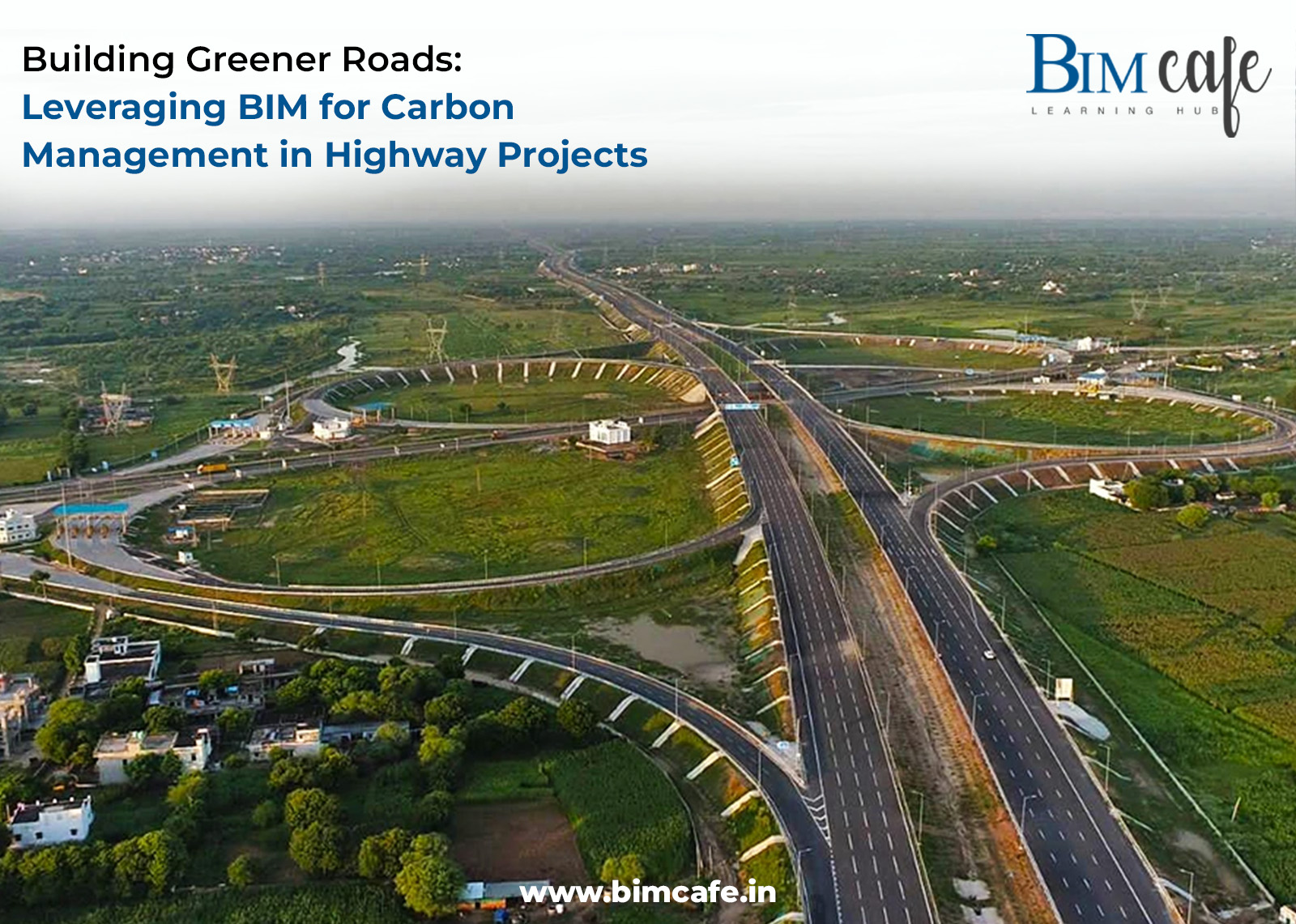
Author: Devika R
January 17, 2025
4 min read
In the pursuit of sustainable infrastructure, the construction industry is embracing intelligent construction innovation to balance efficiency and environmental stewardship. BIM infrastructure is emerging as a pivotal solution in green road construction technology, offering transformative capabilities in the design and execution of road construction projects. By integrating advanced digital tools, BIM methodology enables enhanced workflows, reduced carbon footprints, and improved collaboration among stakeholders. Here we explore the application of BIM technology in addressing construction challenges, with a focus on building greener roads while driving sustainability in modern construction practices.
The Role of BIM in Green Road Construction
BIM is revolutionizing green road construction by enabling lifecycle carbon analysis and integrating sustainable features like solar lighting and smart drainage systems. It enhances collaboration among stakeholders, minimizes material waste through precise planning, and supports long-term maintenance with digital twins, reducing environmental impact. By adopting BIM, professionals can design functional, eco-friendly roads that align with sustainability goals, paving the way for a greener future.
Why is BIM crucial for Carbon Management in Roadway Projects?
- Optimized Material Usage : BIM enables precise modeling, minimizing material waste and associated environmental impacts.
- Enhanced Construction Logistics : BIM optimizes transportation routes, reducing fuel consumption and vehicle emissions.
- Improved Construction Planning : BIM minimizes on-site errors and delays, leading to less material waste and reduced fuel use.
- Sustainable Material Selection : BIM facilitates the selection of low-embodied carbon materials, reducing the project’s environmental footprint.
- Data-Driven Maintenance : BIM enables proactive maintenance, minimizing the need for frequent and disruptive repairs.
- Improved Collaboration : BIM fosters better communication and coordination, leading to a more efficient and less carbon-intensive construction process.
Strategies for Integrating Carbon into BIM for Road Projects
- Life Cycle Assessment (LCA) : Conduct LCA of different road construction materials, including asphalt, concrete, and aggregates
- Embodied Carbon Analysis : Assess the embodied carbon of materials used in road construction, from raw material extraction to transportation and manufacturing.
- Construction Emissions Modeling : Model construction activities, including transportation of materials, equipment, and personnel, to identify opportunities for emissions reduction.
- Maintenance Planning and Optimization: Utilize BIM to analyze road conditions, predict maintenance needs, and optimize maintenance schedules to minimize disruptions and emissions.
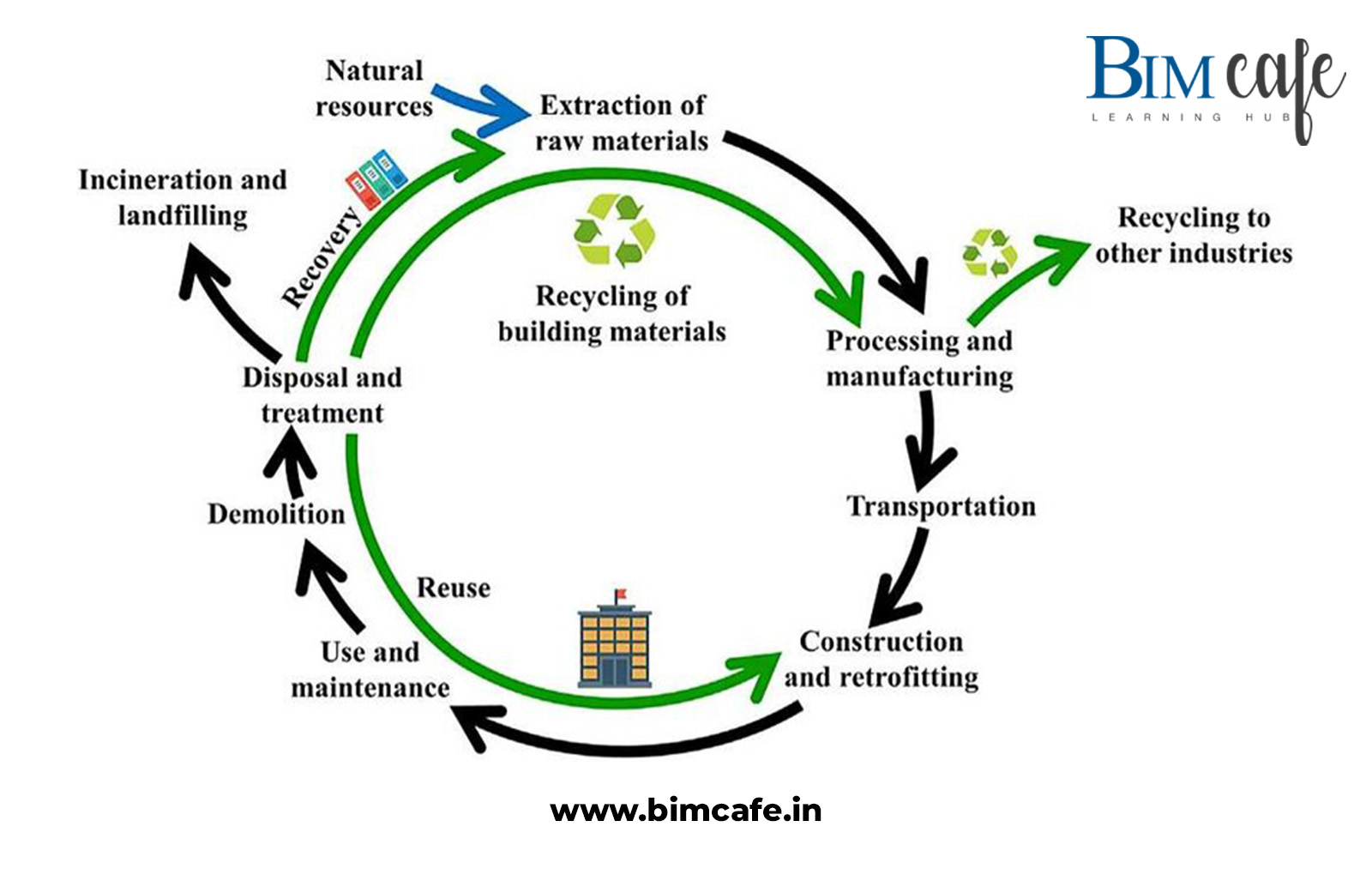
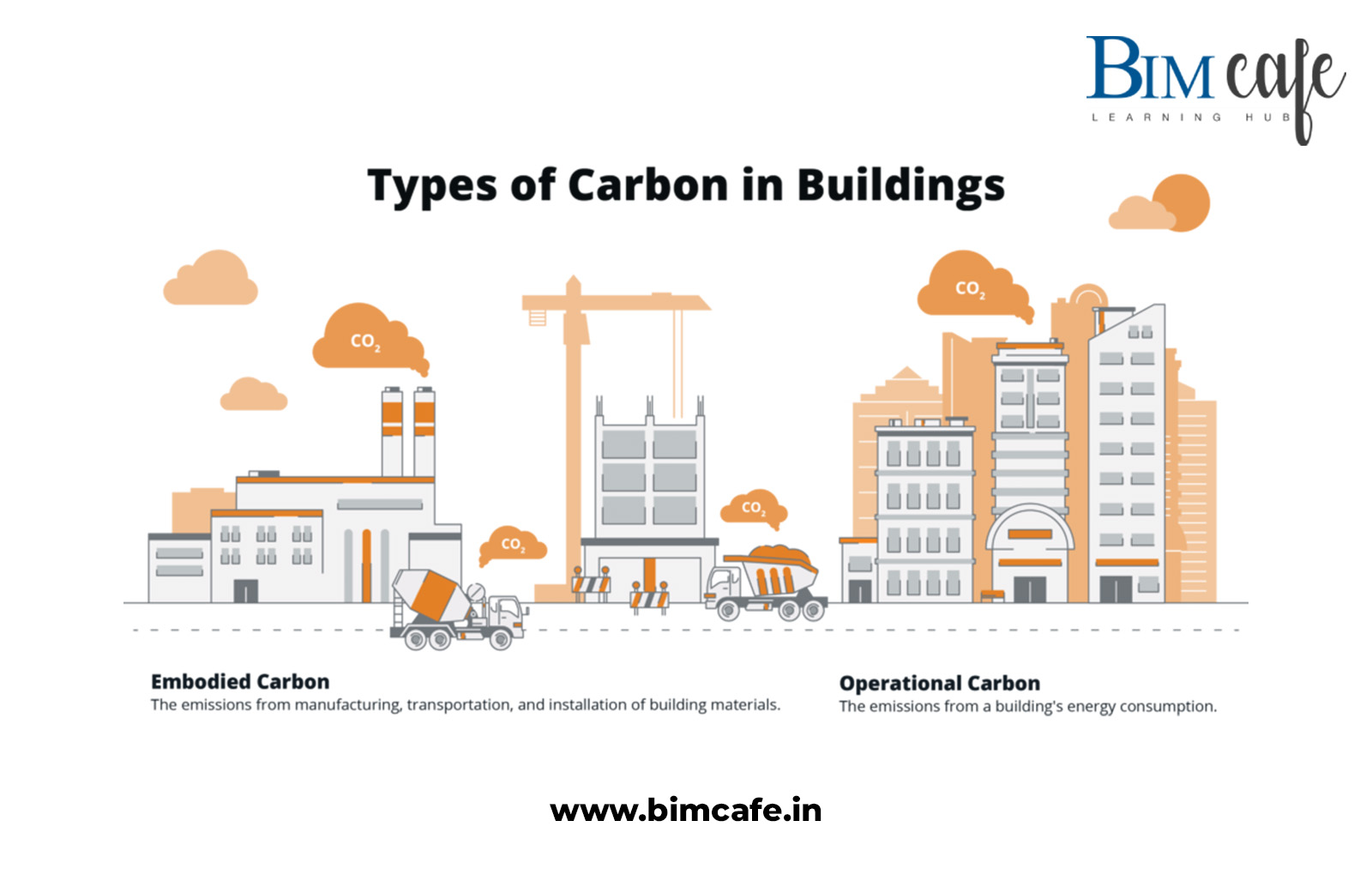
Examples of Live Projects
Delhi-Mumbai Expressway Project:
Demonstrates the effective use of BIM for sustainable development. Engineers have optimized workflows, reduced carbon emissions, and enhanced the efficiency of the construction project.
Nagpur-Mumbai Super Communication Expressway:
Highlights how BIM has streamlined construction processes and minimized environmental impact, transforming traditional construction methods into models of sustainability.
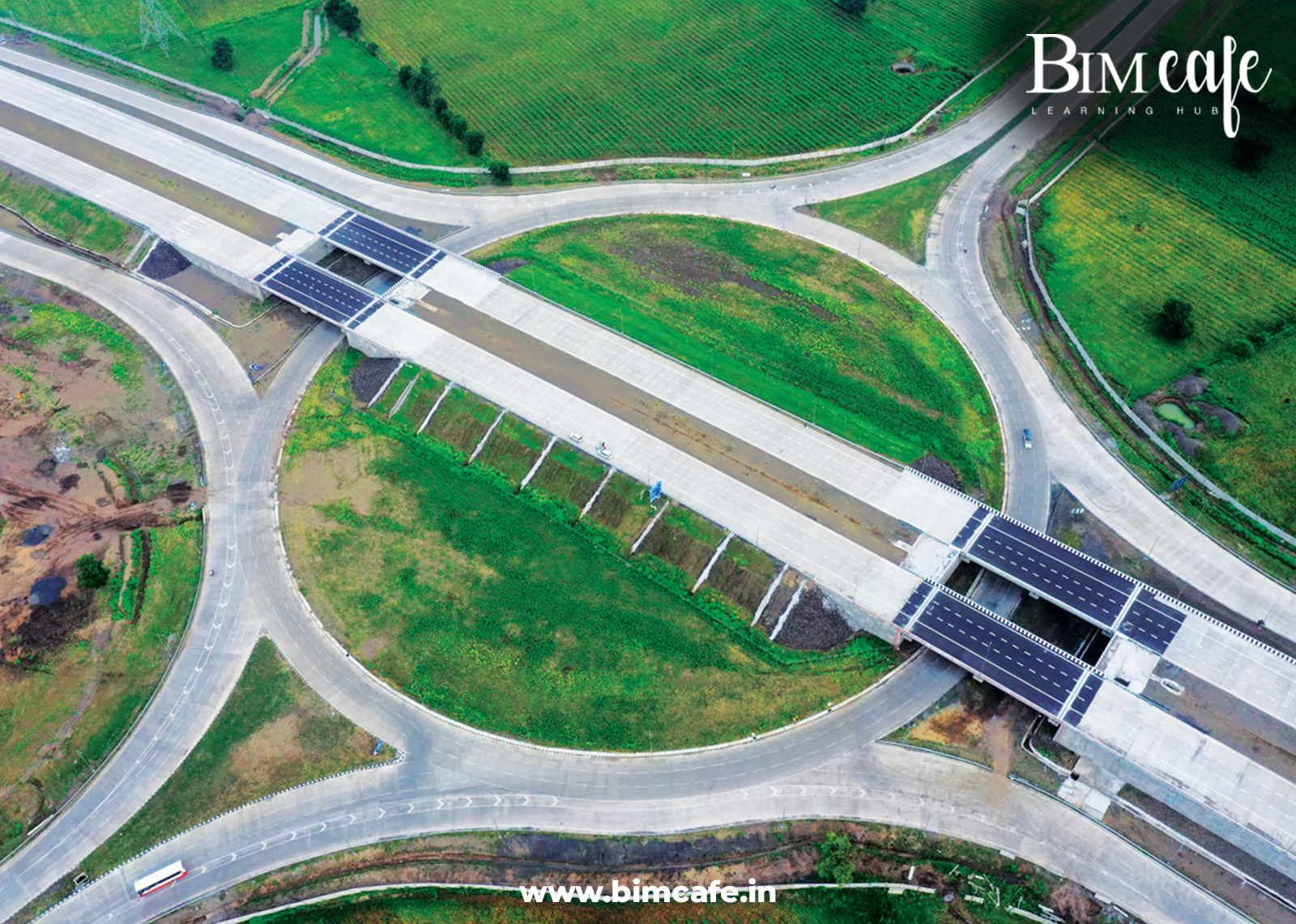
Outer Ring Road Project, Hyderabad:
Exemplifies the integration of renewable energy sources into the construction process. This project not only reduces carbon emissions but also sets a precedent for future infrastructure projects in India.
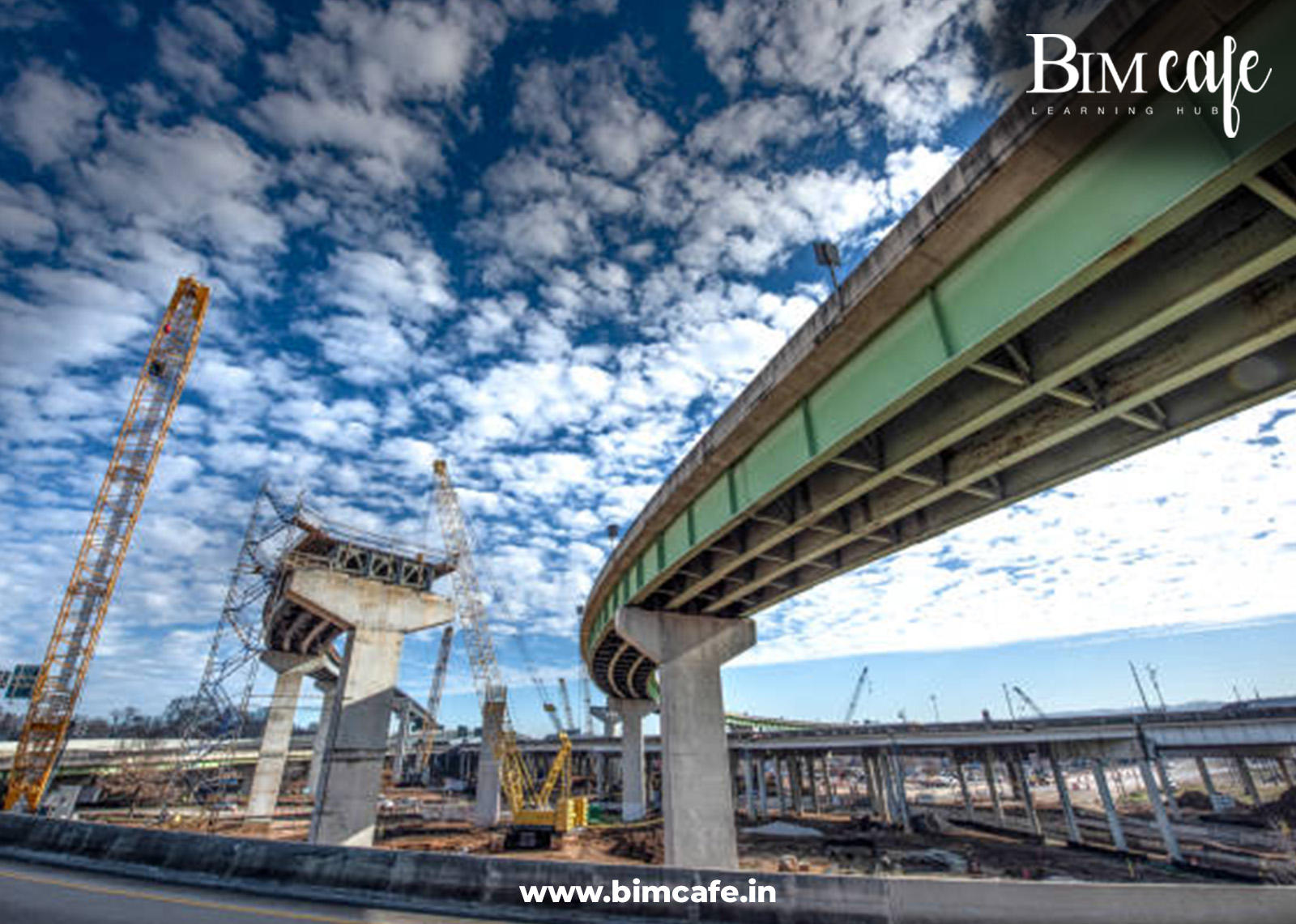
Chennai Maduravoyal Elevated Expressway:
Underscores the benefits of BIM technology. Through accurate simulations and strategic planning, engineers have significantly reduced the carbon footprint of this construction project, showcasing BIM’s potential to drive sustainable road infrastructure.
International Initiatives
The Netherlands (Ongoing):
The Dutch government has implemented a national BIM mandate, requiring the use of BIM for all major infrastructure projects, including road and highway construction. This initiative aims to improve project efficiency, reduce costs, and minimize environmental impact.
California, USA (Ongoing):
The California Department of Transportation (Caltrans) is exploring the use of BIM for road and bridge projects. Their focus is on incorporating sustainability considerations into the design and construction process.
UK (Ongoing):
The UK government has been promoting the use of BIM in the construction industry, including road and highway projects, to improve project delivery and achieve sustainability goals.
Challenges and Future Directions of BIM in Construction
- Standardization Issues :Ensuring consistency in BIM practices across the construction industry is challenging due to varying expertise and approaches.
- Resistance to Change : Engineers and construction professionals often hesitate to adopt new technologies, favoring traditional methods.
- High Initial Costs : The cost of implementing BIM technology can deter smaller projects, despite its long-term benefits.
- Need for Training :Upskilling workers in BIM technology is essential for successful implementation.
- Data Standardization :Developing standardized carbon data for road construction materials and processes is crucial.
- Interoperability :Ensuring seamless data exchange between different BIM software and platforms is essential.
Key Differences Between BIM and Traditional Construction Methods
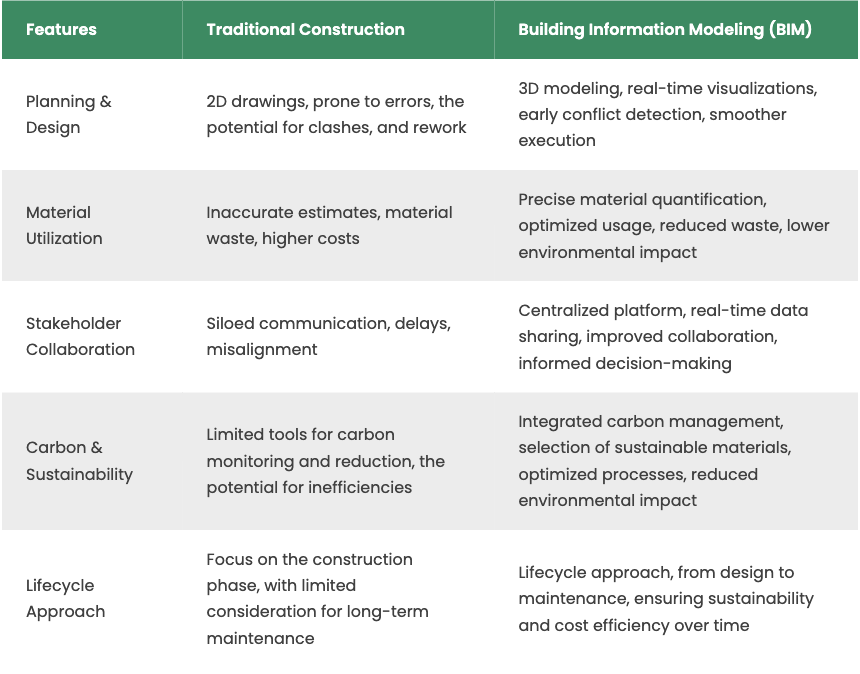
Building a Sustainable Future with BIM
BIM technology revolutionizes carbon management in infrastructure projects by optimizing workflows, enhancing collaboration, and reducing environmental impact. By integrating green road construction technology, the construction industry can lower its carbon footprint and promote sustainable development.
Successful case studies in India highlight BIM’s potential, though challenges like standardizing practices and upskilling workers persist. Addressing these through industry collaboration, research, and government support is vital for adopting BIM and advancing sustainable transportation infrastructure.
If you’re looking to design roads and bridges that align with future-ready infrastructure, gaining expertise in BIM is an excellent starting point. Explore the BIM Professional Course for civil engineers offered by BIM Cafe to kickstart your journey.





